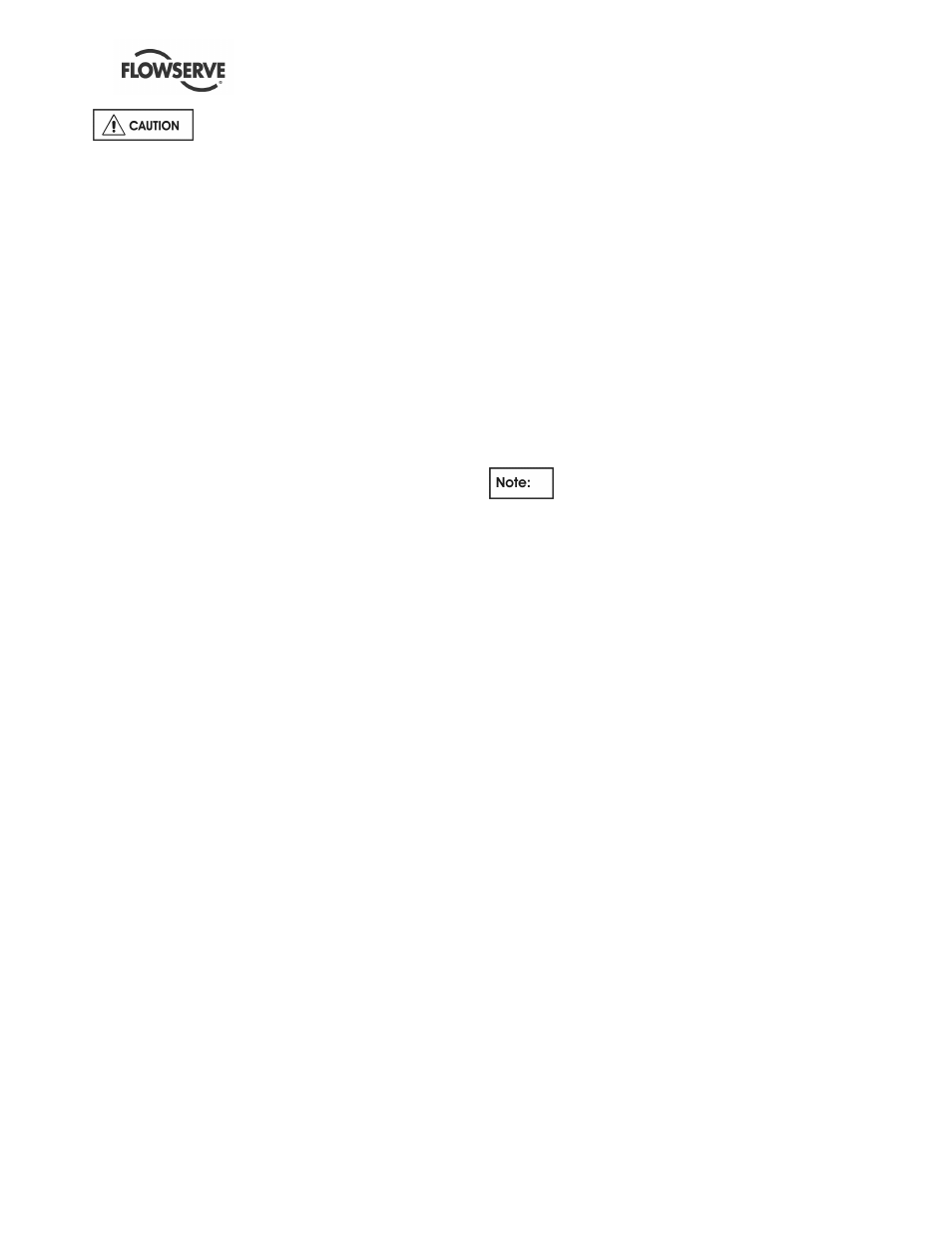Flowserve DMX User Manual
Page 12

DMX/DMXD/DMXH/DMXDH USER INSTRUCTIONS ENGLISH 85392728 - 10/09
Page 12 of 60
If pump is equipped with a mechanical
seal and is stored or has not been run for 1 year or
more, the mechanical seal must be removed before
start-up and faces re-lapped to guard against the
possibility of seal leakage. When reinstalling the seal,
new “O” rings and gaskets must be used.
2.4.1
Pump inspection upon arrival
When the pump is received, it should be inspected
for damage or other signs of rough handling. Any
damage if found should be reported to the carrier
immediately.
Inspect the preservative coating on the various parts.
If necessary, renew the preservative in areas where it
has rubbed off or scraped.
Inspect all painted surfaces. If necessary, touch up
the areas where paint has been chipped or scraped.
Inspect all covers over pump openings and piping
connections. If covers or seals for the covers are
damaged or loose, they are to be removed, and a
visual inspection made of the accessible interior
areas for accumulation of foreign materials or water.
If necessary, clean and re-coat the interior parts with
preservative to restore the parts to the “as shipped”
condition. Install or replace covers and fasten secure.
2.4.2
Storage area
When selecting a storage area, the following should
be taken into consideration:
a) The deterioration of the equipment will be
proportionate to the class/type of storage
provided.
b) The expenses involved in restoring the
equipment at time of operation will be
proportionate to the class/type of storage
provided.
2.4.3
Storage preferred (dry)
If at all possible, the pump and its components
should be stored indoors where they will be protected
from the elements. If it is not possible to store the
pump and its components indoors, precautions must
be taken to protect them from the elements.
Regardless of whether storage is inside or outside,
the storage area should be vibration-free. All boxes
that are marked for inside storage must be stored
indoors. Coverings of heavy gauge plastic sheets,
canvas, waterproof burlap or other suitable coverings
should protect the pump and its components from
dirt, dust, rain, snow or other unfavorable conditions
when stored outdoors.
All equipment must be placed upon skids or blocks to
prevent contact with the ground and surface
contaminants. Equipment must be adequately
supported to prevent distortion and bending.
2.4.3.1
Rotor storage
It is recommended that pump rotor be removed from
pump and stored vertically. Rotors may also be
stored horizontally in the pump. Rotors that have to
be stored horizontally outside the pump must be
supported close to impeller to eliminate sag that may
cause rotor to take a permanent set.
2.4.3.2
Customer inspection
The stored equipment is to be placed on a periodic
inspection schedule by the customer.
The responsibility for setting up an
inspection and maintenance schedule rests with the
customer and will be dependent upon the class/type
of storage provided. It will be expected that initially
inspection would occur weekly, then depending upon
the inspection reports being favorable or unfavorable,
inspection would continue weekly, monthly, or
quarterly, as may be determined. Inspection reports
must be kept on file.
Every inspection should consist of a general surface
inspection.
a) Pump supports are firmly in place.
b) Pump covers over openings are firmly in place.
c) Pump coverings, plastics or tarps, are firmly in
place. Any holes or tears must be repaired to
prevent entrance of dirt or water.
d) Pump covers are periodically removed from
openings and interior accessible areas inspected.
If surface rusting has occurred, clean and repaint
or re-coat with preservative.
e) If rusting occurs on exterior surfaces, clean and
repaint or re-coat with preservative.
f) Loosen casing drain plugs to allow seepage of
any accumulated moisture.
g) If the rotor is stored horizontally, rotate pump
rotor 1-1/4 revolutions at least once a month to
prevent rotor from taking a permanent set.
